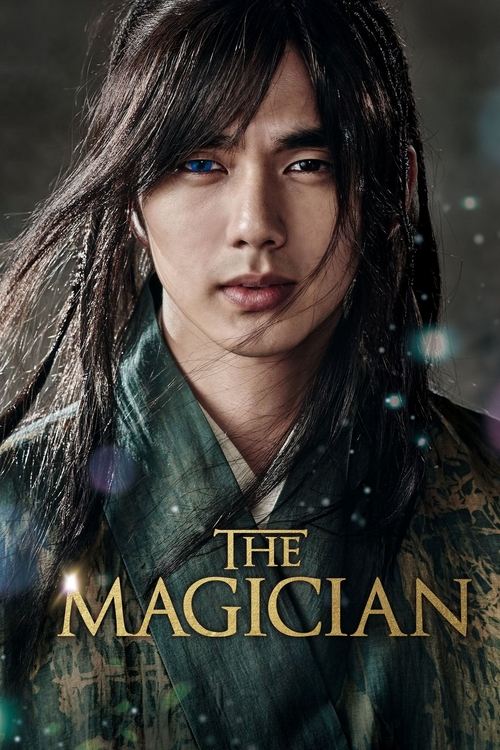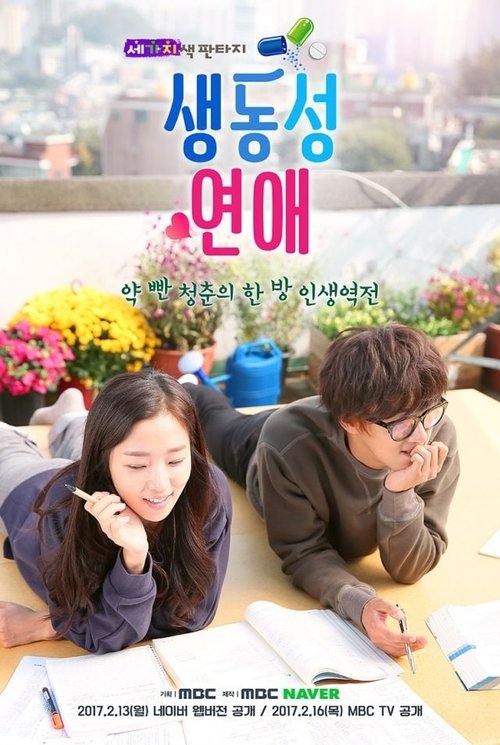
Ask Your Own Question
What is the plot?
"Amor" (2015) unfolds as a poignant and intimate story centered on Tae-Woo, a zookeeper in South Korea, and his deeply devoted girlfriend, Hee-Yeon. The narrative begins with Tae-Woo grappling with the harrowing reality that Hee-Yeon is hospitalized with a terminal illness, her death looming inevitably. This sets a somber tone that permeates the film, as Tae-Woo navigates the emotional and practical challenges of loving someone whose time is painfully limited.
The story opens with Tae-Woo at the zoo, his daily routine shadowed by the weight of Hee-Yeon's condition. The visuals contrast the vibrant life of the animals with the fragility of human existence, emphasizing Tae-Woo's internal turmoil. Hee-Yeon, played by Jung Yoon-Sun, is shown in the sterile hospital environment, frail but resolute, her presence a quiet anchor for Tae-Woo's spiraling emotions.
As the days pass, Tae-Woo visits Hee-Yeon frequently, their interactions marked by a raw tenderness and unspoken fears. In one powerful scene, Tae-Woo holds Hee-Yeon's hand, whispering, "I'm here, always," his voice trembling with desperation. The hospital room, bathed in muted light, becomes a crucible of love and impending loss.
The film delves into Tae-Woo's memories, revealing the depth of their relationship. Flashbacks show their first meeting, a moment of serendipity that blossomed into a profound bond. These scenes are suffused with warmth--the laughter they share, the quiet evenings together, the small acts of care that define their love. Yet, the shadow of illness looms ever-present, casting a bittersweet hue over these recollections.
Tae-Woo's struggle is not only with Hee-Yeon's mortality but also with his own helplessness. He is portrayed as a man caught between hope and despair, his emotions raw and unfiltered. The film does not shy away from depicting his moments of anger and frustration, particularly when confronted with the limitations of medical care and the indifference of the world outside the hospital walls.
A crucial turning point occurs when Hee-Yeon's condition deteriorates sharply. Tae-Woo is summoned to the hospital late at night, the sterile corridors echoing with urgency. The doctors inform him that her time is near, and he must prepare for the inevitable. In a heart-wrenching scene, Tae-Woo sits beside Hee-Yeon's bed, tears streaming down his face as he softly sings a song they once shared, his voice breaking with grief.
The film's climax is a meditation on love's endurance in the face of death. Hee-Yeon passes away quietly, her hand in Tae-Woo's, the room filled with a profound silence that speaks volumes. Tae-Woo's devastation is palpable; he collapses beside her, overwhelmed by loss.
In the aftermath, Tae-Woo is shown returning to the zoo, the animals now seeming distant and disconnected from his world. Yet, amidst his sorrow, there is a subtle glimmer of acceptance. The final scenes depict him walking through the zoo at dawn, the rising sun casting a gentle light, symbolizing the persistence of life and memory.
Throughout "Amor," there are no additional deaths beyond Hee-Yeon's, nor are there confrontations or plot twists that divert from this central narrative. The film's power lies in its quiet, unflinching portrayal of love confronting mortality--a linear, emotionally charged journey from hope through despair to a fragile peace.
"Amor" closes on a note of bittersweet reflection, with Tae-Woo carrying the imprint of Hee-Yeon's love forward, a testament to the enduring human spirit even in the face of inevitable loss.
What is the ending?
In the ending of the movie "Amor," the story culminates in a poignant and emotional resolution. The main character, a young woman named Ana, confronts her feelings about love and loss, ultimately making a choice that reflects her growth and understanding of her own desires. The film closes with a sense of bittersweet acceptance as Ana steps into a new chapter of her life.
As the final scenes unfold, we see Ana standing at a crossroads, both literally and metaphorically. She reflects on her past relationships and the impact they have had on her. The camera captures her contemplative expression, highlighting the weight of her decisions. In a moment of clarity, she chooses to embrace her independence, symbolizing her journey towards self-discovery and empowerment.
The film concludes with Ana walking away from the familiar, leaving behind the remnants of her past. The screen fades to black, leaving the audience with a lingering sense of hope and the possibility of new beginnings.
As the final act of "Amor" unfolds, the atmosphere is thick with tension and emotion. The scene opens with Ana standing alone in her dimly lit apartment, the remnants of her past relationships scattered around her. Photographs of happier times hang on the walls, but they now serve as painful reminders of what she has lost. The camera lingers on her face, capturing the conflict within her--she is torn between the comfort of familiarity and the fear of the unknown.
In the next scene, Ana receives a phone call from her ex-partner, Miguel. His voice is filled with regret as he attempts to reconnect, but Ana's expression reveals her internal struggle. She listens intently, her brow furrowed, as memories of their time together flood her mind. The conversation is fraught with unspoken words and unresolved feelings, and as she hangs up, a single tear rolls down her cheek. This moment signifies her acknowledgment of the pain that love can bring, but also the strength she has gained from it.
The following scene shifts to Ana meeting her friend Clara at a café. Clara, vibrant and full of life, encourages Ana to embrace her independence. The contrast between the two women is stark; Clara represents the freedom and joy that Ana yearns for but feels hesitant to pursue. As they talk, Ana's walls begin to crumble, and she opens up about her fears of being alone. Clara's unwavering support serves as a catalyst for Ana's transformation, igniting a spark of determination within her.
In a pivotal moment, Ana decides to take a walk through the city, the bustling streets filled with life and energy. The camera captures her as she navigates through the crowd, her expression shifting from uncertainty to resolve. Each step she takes symbolizes her journey towards self-acceptance. She pauses at a park, watching couples interact, and for the first time, she smiles--not out of longing, but out of understanding that love can take many forms.
The climax of the film arrives when Ana stands at a literal crossroads, a busy intersection where paths diverge. The camera focuses on her face, reflecting a mix of fear and exhilaration. In this moment, she makes a choice. With a deep breath, she steps forward, choosing the path that leads away from her past and towards her future. The decision is not just about leaving Miguel behind; it is about embracing her own identity and the possibilities that lie ahead.
As the film draws to a close, Ana walks away from the camera, her silhouette framed against the setting sun. The warm hues of the sky symbolize hope and new beginnings. The screen fades to black, leaving the audience with a sense of resolution. Ana's journey is one of self-discovery, and her fate is one of empowerment--she is no longer defined by her relationships but by her own choices and aspirations.
In the final moments, the film leaves viewers with a lingering question about love and independence, inviting them to reflect on their own experiences. Ana's fate is one of liberation, as she steps into a new chapter of her life, ready to embrace whatever comes next.
Is there a post-credit scene?
The movie "Amor," produced in 2015, does not feature a post-credit scene. The film concludes its narrative without any additional scenes or content after the credits roll. The story wraps up in a way that leaves the audience reflecting on the themes of love and connection presented throughout the film, without any further developments or surprises in a post-credit sequence.
What is the significance of the relationship between the main characters in Amor?
The relationship between the main characters, which centers around love and sacrifice, is pivotal to the narrative. It explores the complexities of their bond, revealing how their past experiences shape their present interactions and decisions.
How does the character of the mother influence the protagonist's journey in Amor?
The mother serves as a crucial figure in the protagonist's life, embodying both nurturing and oppressive qualities. Her expectations and emotional struggles deeply affect the protagonist's choices, leading to moments of conflict and introspection.
What role does the setting play in the development of the story in Amor?
The setting in Amor is integral to the story, as it reflects the emotional landscape of the characters. The contrasting environments highlight their internal struggles and the societal pressures they face, enhancing the narrative's emotional depth.
How do the supporting characters contribute to the main character's development in Amor?
Supporting characters in Amor provide critical perspectives that challenge and support the main character. Their interactions reveal different facets of the protagonist's personality and motivations, ultimately influencing their growth throughout the film.
What are the key turning points for the protagonist in Amor?
Key turning points for the protagonist include moments of realization and confrontation with their past. These pivotal scenes force the character to reevaluate their relationships and desires, driving the narrative forward and leading to significant emotional revelations.
Is this family friendly?
The movie "Amor," produced in 2015, is not considered family-friendly and contains several potentially objectionable or upsetting scenes that may affect children or sensitive viewers.
-
Intense Emotional Themes: The film explores deep emotional issues such as love, loss, and the complexities of relationships, which may be difficult for younger audiences to fully understand or process.
-
Depictions of Grief: There are scenes that portray characters dealing with grief and heartbreak, which can be heavy and emotionally charged.
-
Conflict and Tension: The narrative includes moments of conflict between characters that may be distressing, showcasing arguments or emotional confrontations.
-
Mature Relationships: The film delves into adult relationships and the intricacies of love, which may include themes that are not suitable for children.
-
Visual and Emotional Distress: Certain scenes may evoke strong emotional reactions, including sadness or discomfort, which could be upsetting for sensitive viewers.
Overall, the film's mature themes and emotional depth make it more appropriate for an adult audience.























